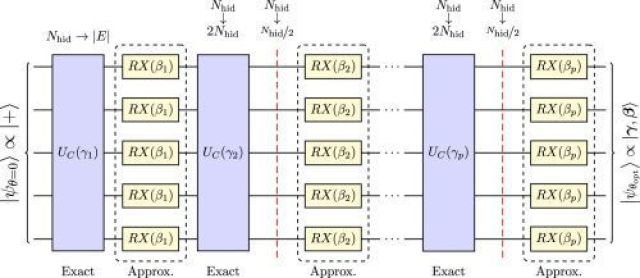A group of researchers from the Swiss Ecole Polytechnique Federale de Lausanne (EPFL) and Columbia University has found a new way to perform complex quantum algorithms on a traditional computer. Usually, calculations of such algorithms require the use of real quantum computers that demonstrate the so-called quantum acceleration, but the developed new method allows us to simulate the behavior of a number of algorithms belonging to the class of variational quantum algorithms with a fairly high efficiency on a conventional computer.
In this case, the researchers managed to implement the Quantum Approximate Optimization Algorithm (QAOA), which is usually used to solve classical mathematical optimization problems.
The work of the QAOA algorithm is to find and choose the best solution to the optimization problem from a number of all possible solutions. Running this algorithm on a conventional computer allows scientists to check which of the quantum algorithms can be performed only on quantum computers, and which ones can be performed on traditional ones. The QAOA algorithm has been the subject of close attention from the technological community for quite a long time, in 2019, after the completion of the creation of the 53-qubit Sycamore quantum computer by Google, this algorithm was one of the first to be performed on this system .

The method developed by scientists is based on modern artificial intelligence technologies. The artificial neural network Neural Network Quantum States, which has been under development since 2016, has been trained and can now emulate all internal aspects of the operation of a quantum computing system. At the same time, the accuracy of the emulation of the quantum system is so high that with its help, for the first time, it became possible to execute the QAOA algorithm on a conventional computer.
Our work is the demonstration that the QAOA algorithm and many other similar algorithms can be run on quantum computers, simulated with high accuracy within a classical computer, write the researchers, the Developed method can be used as a sort of test, and as a working tool for the development of new quantum algorithms that do not require real quantum computer to run and debug quantum software .

